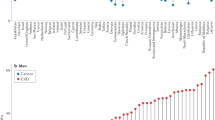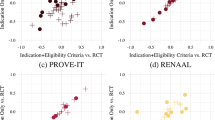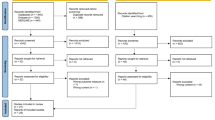Abstract
With the increasing globalization of clinical research and evidence, clinical-practice guidelines (CPGs) developed by the European Union (EU) and the USA are also becoming increasingly international. However, these CPGs can encounter barriers to their practical application. In this Perspectives article, we analyze the main obstacles to the application of EU and US CPGs for cardiovascular diseases from the unique perspective of China, and highlight some potential problems in the globalization of CPGs. Currently, China and other countries with limited independent evidence for CPG development must localize or adapt the CPGs developed by the EU, the USA, or international medical organizations, with systematic consideration of cost-effectiveness and alternative strategies on the basis of the available evidence from the native populations. At the same time, comprehensive capabilities to collect and review clinical evidence to produce population-specific CPGs should be developed.
This is a preview of subscription content, access via your institution
Access options
Subscribe to this journal
Receive 12 print issues and online access
$209.00 per year
only $17.42 per issue
Buy this article
- Purchase on Springer Link
- Instant access to full article PDF
Prices may be subject to local taxes which are calculated during checkout

Similar content being viewed by others
References
Alonso-Coello, P. et al. The quality of clinical practice guidelines over the last two decades: a systematic review of guideline appraisal studies. Qual. Saf. Health Care 19, e58 (2010).
The Guidelines International Network (G-I-N). The International Guideline Library [online], (2012).
Kim, E. S., Carrigan, T. P. & Menon, V. International participation in cardiovascular randomized controlled trials sponsored by the National Heart, Lung, and Blood Institute. J. Am. Coll. Cardiol. 58, 671–676 (2011).
Glickman, S. W. et al. Ethical and scientific implications of the globalization of clinical research. N. Engl. J. Med. 360, 816–823 (2009).
Wagner, K. H. & Brath, H. A global view on the development of non communicable diseases. Prev. Med. http://dx.doi.org/10.1016/j.ypmed.2011.11.012.
WHO. Prevention of cardiovascular disease: guidelines for assessment and management of cardiovascular risk [online], (2007).
International Diabetes Federation. IDF Diabetes Atlas 5th edn (International Diabetes Federation, Brussels, 2011).
EMB Professional Committee. China Guideline Clearinghouse [Chinese] [online], (2012).
Gu, D. et al. Prevalence of diabetes and impaired fasting glucose in the Chinese adult population: International Collaborative Study of Cardiovascular Disease in Asia (InterASIA). Diabetologia 46, 1190–1198 (2003).
Niu, S. et al. The association between socioeconomic status of high-risk patients with coronary heart disease and the treatment rates of evidence-based medicine for coronary heart disease secondary prevention in China: Results from the Bridging the Gap on CHD Secondary Prevention in China (BRIG) Project. Am. Heart J. 157, 709–715e1 (2009).
Zhou, Z. & Hu, D. An epidemiological study on the prevalence of atrial fibrillation in the Chinese population of mainland China. J. Epidemiol. 18, 209–216 (2008).
US National Library of Medicine. ClinicalTrials.gov [online], (2012).
Liu, J. et al. Predictive value for the Chinese population of the Framingham CHD risk assessment tool compared with the Chinese Multi-Provincial Cohort Study. JAMA 291, 2591–2599 (2004).
Wu, Y. F. et al. Estimation of 10-year risk of fatal and nonfatal ischemic cardiovascular diseases in Chinese adults. Circulation 114, 2217–2225 (2006).
Zhao, F. H. et al. Predictive factors of recurrent angina after acute coronary syndrome: the global registry acute coronary events from China (Sino-GRACE) Chin. Med. J. (Engl.) 121, 12–16 (2008).
Han, Y. L. et al. Real world clinical performance of the zotarolimus eluting coronary stent system in Chinese patients: a prospective, multicenter registry study. Chin. Med. J. (Engl.) 124, 3255–3259 (2011).
Eagle, K. A. et al. A validated prediction model for all forms of acute coronary syndrome: estimating the risk of 6-month discharge death in an international registry. JAMA 291, 2727–2733 (2004).
AHA and American Stroke Association. Statements and Guidelines [online], (2012).
European Society of Cardiology. ESC Clinical Practice Guidelines [online], (2012).
Hu, D., Li, J. & Li, X. Investigation of blood lipid levels and statin interventions in outpatients with coronary heart disease in China: the China Cholesterol Education Program (CCEP). Circ. J. 72, 2040–2045 (2008).
National Cholesterol Education Program (NCEP) Expert Panel on Detection, Evaluation and Treatment of High Blood Cholesterol in Adults (Adult Treatment Panel III). Third Report of the National Cholesterol Education Program (NCEP) Expert Panel on Detection, Evaluation, and Treatment of High Blood Cholesterol in Adults (Adult Treatment Panel III) final report. Circulation 106, 3143–3421 (2002).
Yang, Y. M. et al. Clinical characteristics and management of patients with ST segment elevation myocardial infarction in China: survey of 7510 cases [Chinese]. Zhonghua Yi Xue Za Zhi 85, 2176–2182 (2005).
Gao, R. et al. Prospective observational study of acute coronary syndromes in China: practice patterns and outcomes. Heart 94, 554–560 (2008).
Liu, Q., Zhao, D., Liu, J., Wang, W. & Liu, J. Current clinical practice patterns and outcome for acute coronary syndromes in China: results of BRIG project [Chinese]. Zhonghua Xin Xue Guan Bing Za Zhi 37, 213–217 (2009).
Huang, Y. et al. Age and gender variations in the management of ischaemic stroke in China. Int. J. Stroke 5, 351–359 (2010).
Thygesen, K. et al. Universal definition of myocardial infarction. Circulation 116, 2634–2653 (2007).
Gao, R. L. Current status of percutaneous coronary intervention in China. Heart 96, 415–418 (2010).
American Diabetes Association. Diagnosis and classification of diabetes mellitus. Diabetes Care 34 (Suppl. 1), S62–S69 (2011).
Tricoci, P., Allen, J. M., Kramer, J. M., Califf, R. M. & Smith, S. C. Jr. Scientific evidence underlying the ACC/AHA clinical practice guidelines. JAMA 301, 831–841 (2009).
Camm, A. J. et al. Guidelines for the management of atrial fibrillation: the Task Force for the Management of Atrial Fibrillation of the European Society of Cardiology (ESC). Eur. Heart J. 31, 2369–2429 (2010).
Wann, L. S. et al. 2011 ACCF/AHA/HRS focused update on the management of patients with atrial fibrillation (updating the 2006 guideline): a report of the American College of Cardiology Foundation/American Heart Association Task Force on Practice Guidelines. J. Am. Coll. Cardiol. 57, 223–242 (2011).
Chenhsu, R. Y., Chiang, S. C., Chou, M. H. & Lin, M. F. Long-term treatment with warfarin in Chinese population. Ann. Pharmacother. 34, 1395–1401 (2000).
Yu, H. C., Chan, T. Y., Critchley, J. A. & Woo, K. S. Factors determining the maintenance dose of warfarin in Chinese patients. QJM 89, 127–135 (1996).
Cheng, T. O. Chinese patients require lower dosage of warfarin. Int. J. Cardiol. 139, 1 (2010).
Yuan, H. Y. et al. A novel functional VKORC1 promoter polymorphism is associated with inter-individual and inter-ethnic differences in warfarin sensitivity. Hum. Mol. Genet. 14, 1745–1751 (2005).
Huffman, M. D. et al. A cross-sectional study of the microeconomic impact of cardiovascular disease hospitalization in four low- and middle-income countries. PLoS One 6, e20821 (2011).
Guan, F. et al. Community-wide survey of physicians' knowledge of cholesterol management. Chin. Med. J. (Engl.) 123, 884–889 (2010).
Dong, G. H. et al. Prevalence, awareness, treatment & control of hypertension in rural Liaoning province, China. Indian J. Med. Res. 128, 122–127 (2008).
Xu, W. et al. Knowledge, attitude, and behavior in patients with atrial fibrillation undergoing radiofrequency catheter ablation. J. Interv. Card. Electrophysiol. 28, 199–207 (2010).
Liu, L. S. et al. 2010 Chinese guidelines for the management of hypertension [Chinese]. Zhonghua Xin Xue Guan Bing Za Zhi 39, 579–615 (2011).
Joint Committee for Developing Chinese Guidelines on Prevention and Treatment of Dyslipidemia in Adults. Chinese guidelines on prevention and treatment of dyslipidemia in adults [Chinese]. Zhonghua Xin Xue Guan Bing Za Zhi 35, 390–419 (2007).
Wang, L. et al. Quality of reporting of trial abstracts needs to be improved: using the CONSORT for abstracts to assess the four leading Chinese medical journals of traditional Chinese medicine. Trials 11, 75 (2010).
Chen, Y. et al. Assessment of the quality of reporting in abstracts of randomized controlled trials published in five leading Chinese medical journals. PLoS One 5, e11926 (2010).
Wu, B. et al. Meta-analysis of traditional Chinese patent medicine for ischemic stroke. Stroke 38, 1973–1979 (2007).
The Cochrane Library. The Cochrane Library: independent high-quality evidence for health care decision making [online], (2012).
Zhan, S. Y. Development of clinical practice guidelines should be based on scientific methodology [Chinese]. Zhonghua Er Ke Za Zhi 47, 163–166 (2009).
Fervers, B. et al. Adaptation of clinical guidelines: literature review and proposition for a framework and procedure. Int. J. Qual. Health Care 18, 167–176 (2006).
Author information
Authors and Affiliations
Contributions
D. Zhao researched the data for the article. Both authors contributed substantially to discussion of its content, writing the manuscript, and to reviewing and editing it before submission.
Corresponding author
Ethics declarations
Competing interests
The authors declare no competing financial interests.
Rights and permissions
About this article
Cite this article
Zhao, D., Hu, D. Barriers to translating EU and US CVD guidelines into practice in China. Nat Rev Cardiol 9, 425–429 (2012). https://doi.org/10.1038/nrcardio.2012.62
Published:
Issue Date:
DOI: https://doi.org/10.1038/nrcardio.2012.62
This article is cited by
-
Developing clinical practice guidelines for caries prevention and management for pre-school children through the ADAPTE process and Delphi consensus
Health Research Policy and Systems (2016)
-
The need for multicentre cardiovascular clinical trials in Asia
Nature Reviews Cardiology (2013)



